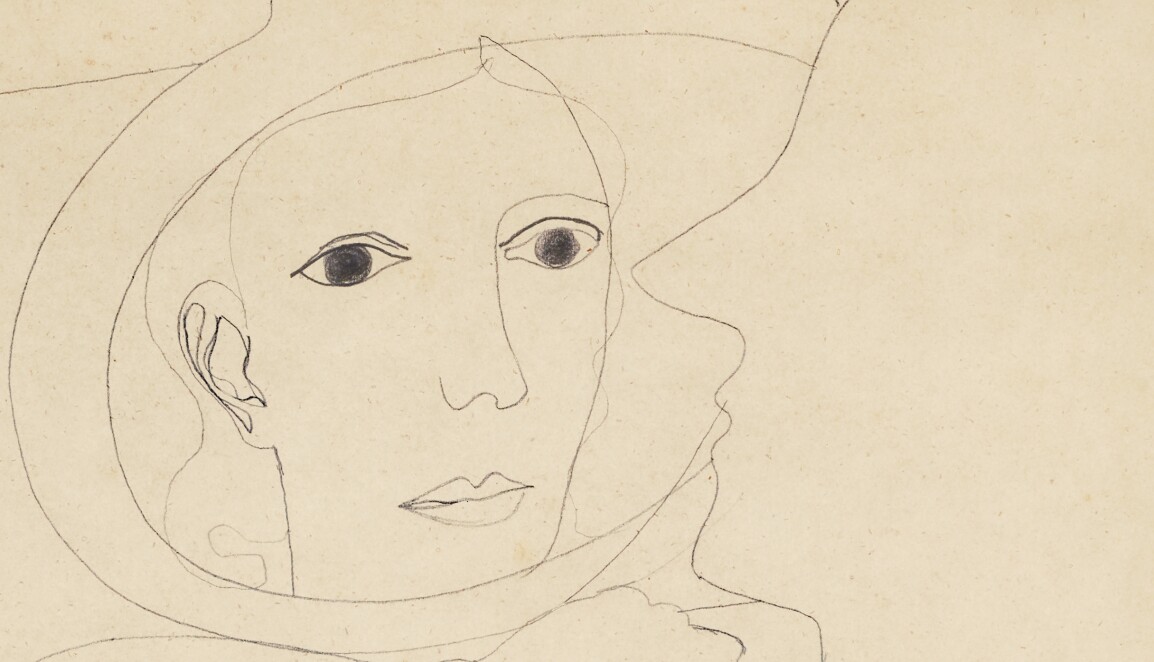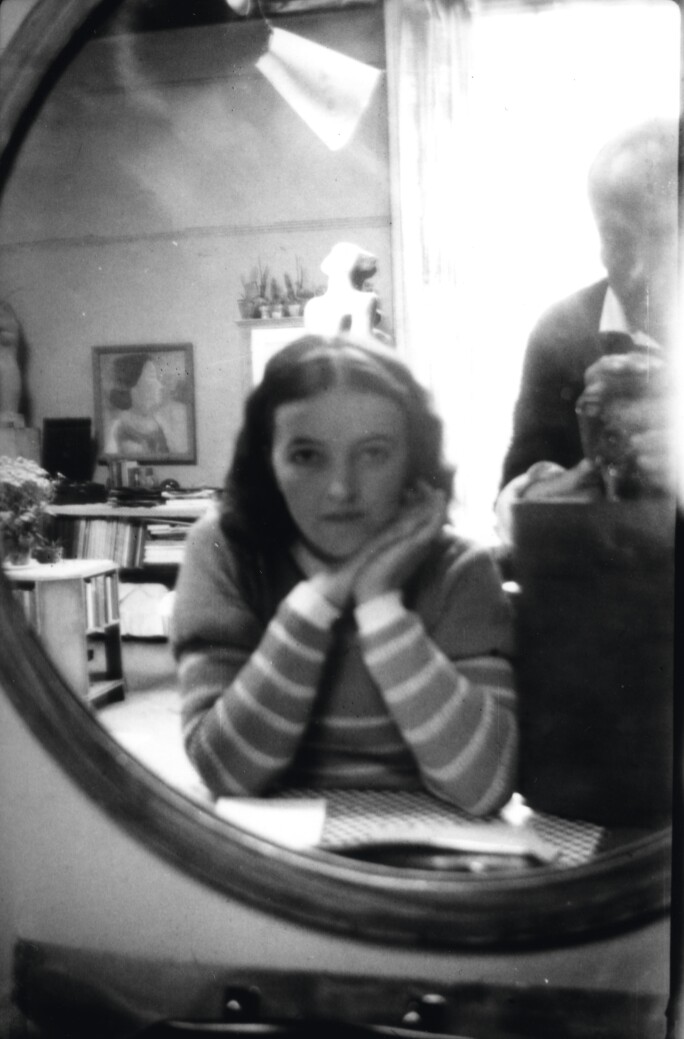'Barbara & and I are the same…our ideas, & our rhythms, our life is so exactly married that we can live think & work & move & stay still together as if we were one person.'
Ben Nicholson wrote these lines to his friend and patron Helen Sutherland in 1932, the same year that he and Barbara Hepworth began to share her studio and apartment at No.7 The Mall, Hampstead and the year before this delicate yet intense drawing was executed. Nicholson and Hepworth had known each other for little over twelve months but already a powerful artistic synergy was forming that would shape their aesthetic and define their careers.

In the present work Nicholson depicts Hepworth in simple understated line, so characteristic of his work, with the detail reserved for the reflection of her face, Hepworth looks at us with large soft eyes and just the hint of a smile. Her profile is depicted in singular line, a motif that Nicholson was exploring during this period culminating in a double portrait of himself and Hepworth titled 1933 (St-Remy, Provence) which has a simplification of form and line, in an almost classical style, that engenders an emotional and intense encounter on the canvas. The present work can be seen as a direct precursor to the finished painting; indeed, Nicholson himself referenced the relationship between his drawings of Hepworth and 1933 (St-Remy, Provence) in a letter to Nicolete Gray, the daughter of Laurence Binyon and a major exponent of the arts in Britain:
'I always liked that dwg [sic] of Barbara looking into a mirror – it was a strange rather ornate white framed oval mirror with ‘outside’ beyond – so that one had inside & outside as well as reflection and reflected – it’s from this that St Remy grew. I have always liked the idea of the reflection being more actual than the object reflected.'

Much of Hepworth and Nicholson’s relationship during this period is documented in a series of personal and intimate photographs taken in the studio and apartment at No.7 The Mall including a number of photographs exploring and experimenting with reflections and reflected space. The discourse between these photographs and Nicholson’s artwork is immediately tangible when one considers 1933 (girl in a mirror) alongside the photograph illustrated above showing Nicholson taking a photograph of Hepworth reflected in a mirror. In the photograph Hepworth has the same gentle expression and direct gaze as in the present work, whilst also showing the fascinating discourse between photography and drawing that Nicholson was exploring during this period.
The present work is an intensely romantic drawing conceived at the beginning of Nicholson and Hepworth’s relationship, an artistic and personal journey, which would take them from Hampstead to Paris to St Ives and in the process catapult British Modernism onto the international stage.